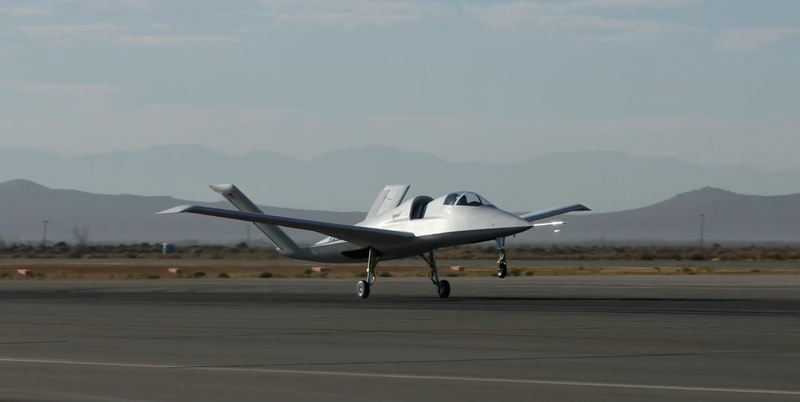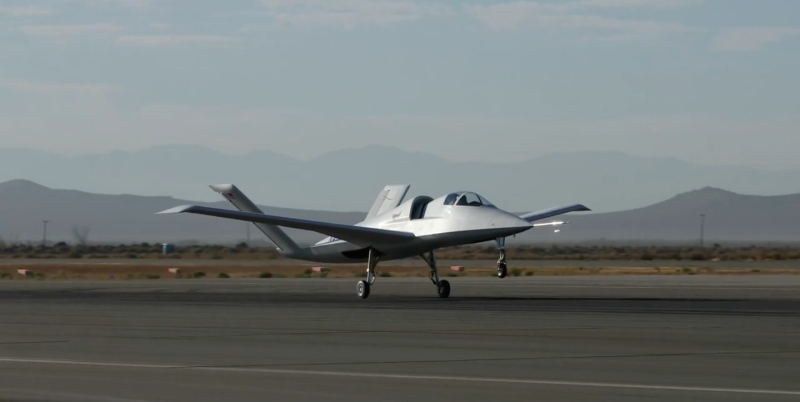
 Foxtrot AlphaTech and news from the world of modern defense.
Foxtrot AlphaTech and news from the world of modern defense.The Scaled Composites Model 401 is a small, single engine jet that looks just like what the military wants: new a light attack aircraft capable of supporting troops on the ground. It’s also a total weirdo.
Built by Scaled Composites, a generalpurveyor of strange-looking airplanes with funny names like the Proteus and the BiPod, and introduced to the public in 2017, the 401 is in the news again after a sighting last week in Mojave, California.
For years, the U.S. Air Force has planned to eventually replace the illustrious A-10 Warthog ground attack jet with the F-35 Joint Strike Fighter. The Air Force is convinced that the A-10, which was expected to have a relatively short lifespan in the Cold War battles it was designed for, will fare even worse against modern air defense guns and missiles fielded by Russia and China.
While the F-35 will target the ground forces of high-end enemies, the service also wants a low-end attack aircraft for bombing enemies without sophisticated air defenses, such as ISIS and the Taliban. Used against such enemies, the F-35 and A-10 would be like using Thor’s hammer to kill ants.
Advertisement
A low-end “observer, attack” or OA aircraft that uses a single turboprop or turbofan engine would be cheaper than the F-35 to buy, cheaper to fly, and be able to operate from dusty, austere airbases in the middle of nowhere.

In 2017 the service ran what amounted to a fly-off competition between a number of planes, including the Beechcraft AT-6 Wolverine, Sierra Nevada A-29 Super Tucano, and Textron Scorpion, but by January the service said the OA-X program was on indefinite hold as the service wanted more options.
Advertisement
Perhaps not coincidentally, the Scaled Composites 401 was unveiled in October 2017. Scaled Composites claimed the aircraft were built on behalf of a “proprietary customer” (cough the Feds cough) as an “aircraft for research flight services to industry partners and the United States government.”
Here’s a video of the 401’s first flight:
Scaled Composites built two 401s. The planes have a stealthy look to them, with flat features and a wing similar to that of the General Atomic Predator-C drone. Both Model 401 planes measure 38 feet long with a 38-foot wingspan. The aircraft, which are powered by a Pratt & Whitney JTD15D-5D engine, can reach Mach 0.6 and fly up to three hours at a time. Its maximum takeoff weight is 8,000 pounds.
Advertisement
The company further reports on its website that the aircraft has a maximum ceiling of 30,000 feet. It weighs 4,000 pounds empty with a maximum takeoff weight of 8,000 pounds.That’s more than two VW Beetles and easily enough to include a pilot, fuel, sensor and targeting system, four 250 pound laser guided bombs, and a gun pod for good measure.
The 401’s powerplant is a Pratt & Whitney JTD15D-5D engine generating 3,045 pounds of thrust. The JTD15D-5D has been around for a while and was used to power the first Cessna Citation. Today it is still mostly a civilian engine, with the exception of the Alenia Aermacchi M-311 light attack jet. According to Defense News, which covered the 401’s rollout at the time, the aircraft has a top speed of Mach 0.6 and can fly for up to three hours.
The 401 could easily become a light attack aircraft. Scaled Composites could fit the aircraft with an electro-optical sensor system allowing the pilot to identify targets on the ground, especially at night or under cover of clouds or smoke. A Link 16 datalink would allow the pilot to collaborate with ground forces and other air units to share data, such as target coordinates.
Advertisement
Thanks to America’s endless wars, there is no shortage of lightweight, precision-guided weaponry to hang off an armed 401, including APKWS II laser guided 2.75-inch rockets, externally-mounted cannon pods, Stormbreaker all-weather bombs, and air-to-ground missiles such as the short-range Griffin and larger Hellfire.

One useful clue from last week’s sighting: ground crew servicing the aircraft wore t-shirts emblazoned with the phrase “Son of ARES.” ARES, or Agile Responsive Effective Support, was a Scaled Composites prototype built built in the late 1980s and flowing in 1990 response to a U.S. Army request for a “low-cost, battlefield attack aircraft.” Sound familiar? It’s almost like the military has been asking for the same stuff for decades, and it never happens.
Advertisement
There’s a lot we don’t know about the plane. We don’t know how much it costs, or how much it will cost per hour to fly—important drivers for what is supposed to be an aircraft orders of magnitude cheaper than the F-35. What we do know is that, as of this week, it’s still flying, doing who knows what.













